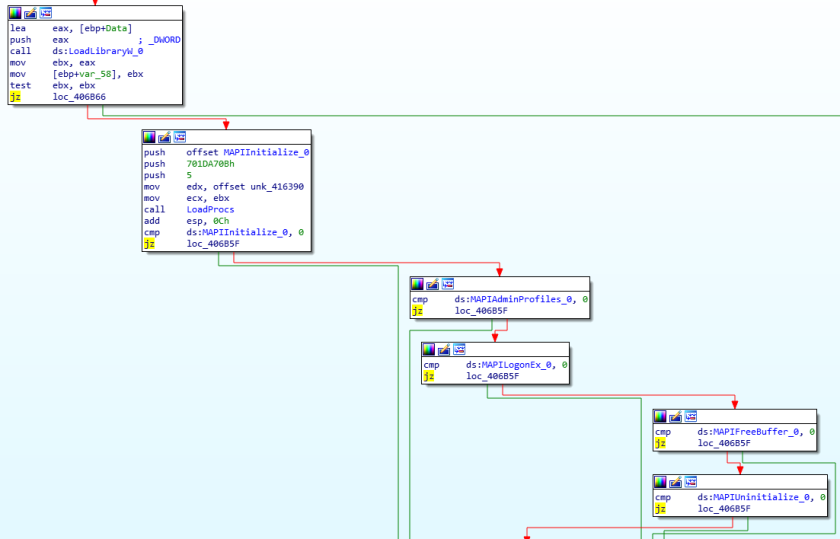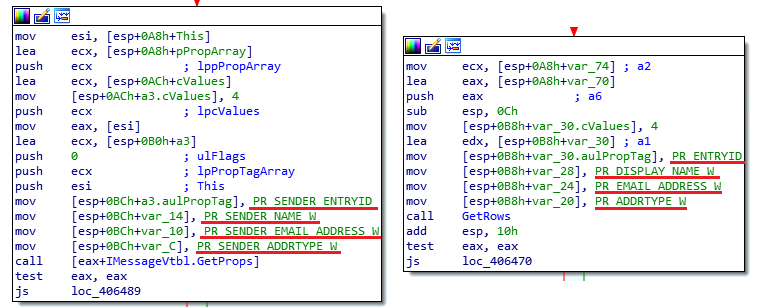The original German blog post can be found on the G DATA Blog.
Emotet has been known as a trojan for years. Former versions focused on attacking online banking users, however the current Emotet was transformed into a downloader and information stealer. The first reports of this new variant were published by CERT Polska in April 2017. Since then, Emotet has been spreading through spam phishing mails containing a link to a Microsoft Word document that acts as dropper for the Emotet binary.
Recently, CERT-Bund again warned about the spam mails which spread Emotet. The sender address of these emails is spoofed to appear as a sender known to the recipient. This strengthens the trust in the mail and increases the probability that the recipient opens the attachment or link without further consideration.
For this to work, the entities spreading Emotet need to have at least superficial knowledge of the social network a target interacts with via email. Acting opportunistically Emotet delivers a specific module to infected systems to harvest all emails in Microsoft Outlook accounts of the current user, allowing it to extract the relations between sender and receiver.

To obtain the information from Outlook, the module takes advantage of the standardized interface MAPI. The picture above shows the loading of the MAPI-DLL and the retrieval of the needed functions. Utilizing this interface, the module iterates through all Outlook profiles it can access on the computer. It extracts all E-Mail-Account Names and E-Mail-Addresses from each profile. Afterwards it searches for emails recursively in each folder in the profile. From each mail found it extracts the sender (displayed name and mail address) and all recipients (displayed names and mail addresses) inclusive the recipients in the CC- and BCC-fields and saves them in relation to each other. The picture below shows the extracted fields from the emails. In case a field only contains a reference to an address book entry, the module extracts the name and email address from the address book. In this process only the mail header is evaluated, the content of the mails is not analyzed.

After the Emotet module has searched all profiles, folders, and emails, it writes the data it has retrieved in a temporary file in the directory %PROGRAMDATA%. The email addresses are sorted descending by how often they occur. Each address is extended with all contacts, that are in relation to it. However, two cases are distinguished:
- if the referenced contact is the sender of the mail, it is extended with all recipients
- if the referenced contact is the recipient of the mail, it is only extended with the sender
Example (Mailbox of A):
Mail 1: A sends to B and C
Mail 2: D sends to A
Mail 3: C sends to A , D, and E
A is referenced three times and therefore is placed on top of the list. A has a relation to B and C through mail 1, thus B and C get connected with A. Mail 2 shows a connection from D to A, thus D gets connected with A too. The relation from C to A in mail 3 is ignored, because it is already captured in mail 1 (A→C). Mail 3 contains the additional relations C→D and C→E. As no relations between C↔D and C↔E are already in the list, the contacts D and E get assigned to the contact C and are appended to the list.
The complete list, which gets transferred to the attacker, looks like this:
A<[email protected]>; B<[email protected]>; C<[email protected]>; D<[email protected]>
C<[email protected]>; D<[email protected]>; E<[email protected]>
Afterwards the module encrypts the file, transfers it to the attacker and removes it from disk.
This allows the attacker to get a condensed but comprehensive overview of the social network graph behind a victims email communications. With such a list, an attacker has knowledge of the relation between persons and can send spam mails with suitable sender header without great afford. Additionally, an attacker learns relations between contacts whose computers are not yet infected.
To deliver the spam mails to the suitable recipients, the attacker needs valid E-Mail accounts. For this task, they use an additional module that is able to extract the credentials from mail programs and transfer them to the attackers. To extract the credentials from all common mail programs, such as Microsoft Outlook, Mozilla Thunderbird, and Windows Mail, this module utilizes an integrated copy of the application Mail PassView from the company NirSoft. It writes this information to a temporary file, which is then encrypted and transfered to the attacker. Once transfered the temporary file is deleted.
